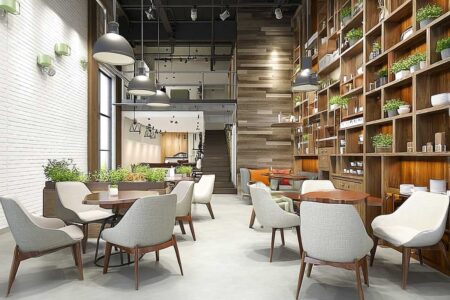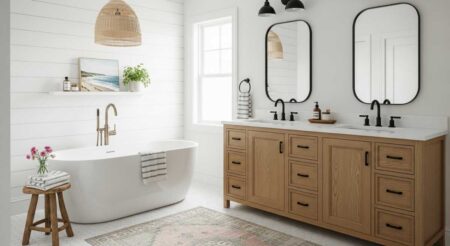The future of interior design is no longer just about aesthetics—it’s about how spaces make us feel. As our homes become multi-functional, evolving into places where we work, relax, and gather, the need for interiors that balance style and comfort has never been greater. But how do we achieve spaces that look refined without sacrificing coziness? The answer lies in emerging design trends that prioritize both beauty and livability.
Let’s explore the future of home design, where sophistication meets sanctuary.
1. The Rise of “Soft Modernism”
Minimalism has long dominated the design world, but its stark, cold aesthetic is giving way to something warmer: soft modernism. This approach keeps the clean lines and open spaces of modern design but introduces softer textures, earthy tones, and curved furniture to make rooms feel more inviting. Soft modernism features include:
- Neutral palettes with warmth—Think warm taupes, creamy whites, and soft clay hues instead of stark black-and-white contrasts.
- Curved furniture and organic shapes—Sharp edges are fading in favor of rounded sofas, arched doorways, and sculptural decor that add a sense of flow.
- Layered textures—Plush rugs, velvet cushions, and boucle upholstery create a tactile experience that makes spaces feel more intimate.
The shift toward soft modernism suggests that future homes will prioritize comfort without sacrificing elegance, allowing us to enjoy both sophistication and coziness.
2. The Wellness-Centric Home
The future of design isn’t just about looking good—it’s about feeling good. The wellness movement is making its way into interior spaces, leading to trends that enhance mental clarity, relaxation, and overall well-being. Look out for:
- Biophilic design—Incorporating natural elements like indoor gardens, stone finishes, and wooden furniture fosters a connection with nature and reduces stress.
- Lighting that mimics natural cycles—Expect to see more circadian lighting systems that adjust brightness and warmth throughout the day to support sleep and focus.
- Home spas and relaxation corners—Designated spaces for unwinding, from deep-soaking tubs to meditation nooks, will become more common.
As our homes evolve into personal retreats, future designs will be driven by the need for serenity, balance, and holistic well-being.
3. The Seamless Indoor-Outdoor Connection
As more people seek an escape from urban stress, the desire for blended indoor-outdoor spaces is shaping the future of home design. Elements include:
- Oversized windows and glass walls—These create a visual extension of indoor spaces, allowing more natural light and a stronger connection to the outdoors.
- Multi-functional outdoor spaces—Backyards are no longer just for lounging—they’re becoming year-round extensions of the home, featuring outdoor kitchens, fire pits, and even heated patios.
- Sustainable landscaping—Low-maintenance gardens, vertical planters, and smart irrigation systems help create greenery without excessive upkeep.
By blurring the lines between interior and exterior, homes will feel more open, breathable, and connected to nature.
4. The Importance of Skilled Craftsmanship
With design trends becoming more personalized and intricate, professional craftsmanship is more important than ever. Finding experts who understand how to execute complex textures, custom finishes, and well-balanced spaces is key to achieving both style and comfort.
If you’re looking to elevate your interiors, hiring interior decorators near me ensures your vision comes to life with precision and expertise. Whether it’s a carefully curated paint palette, custom molding, or artistic finishes, skilled professionals can transform a space from ordinary to extraordinary.
5. Smart Homes with a Cozy Twist
Technology has made homes smarter, but the next wave of innovation will focus on seamless integration that enhances comfort rather than overwhelming with gadgets, including:
- Voice-activated mood settings—Imagine saying, “Relax mode,” and watching the lighting dim, the curtains close, and your playlist start—all hands-free.
- Self-adjusting furniture—Ergonomic seating and beds that adapt to your body’s comfort needs will become more common.
- Intelligent climate control—Smart home systems will automatically adjust humidity and temperature to create the perfect indoor atmosphere.
The goal isn’t to make homes feel like tech hubs but to use innovation to enhance ease, relaxation, and ambiance.
The Future of Comfortable Luxury
The next evolution of design isn’t just about how a space looks—it’s about how it feels, functions, and enhances daily life. The future home is one that balances:
✅ Modern aesthetics with soft, inviting textures
✅ Smart technology with effortless usability
✅ Personal expression with timeless craftsmanship
✅ Sustainability with enduring quality
By embracing these emerging trends, we can create homes that are not only stylish but also deeply comforting, personal, and future-ready.






